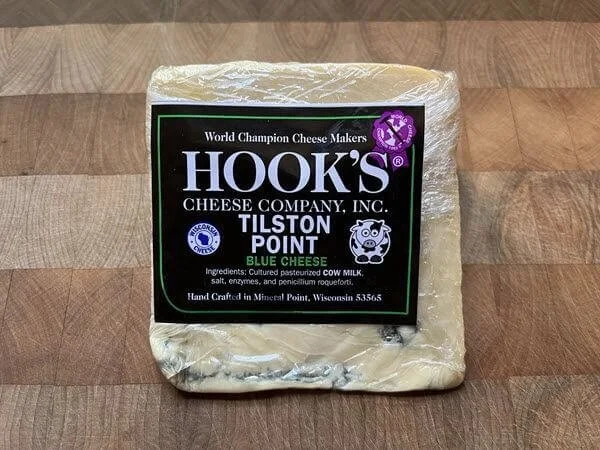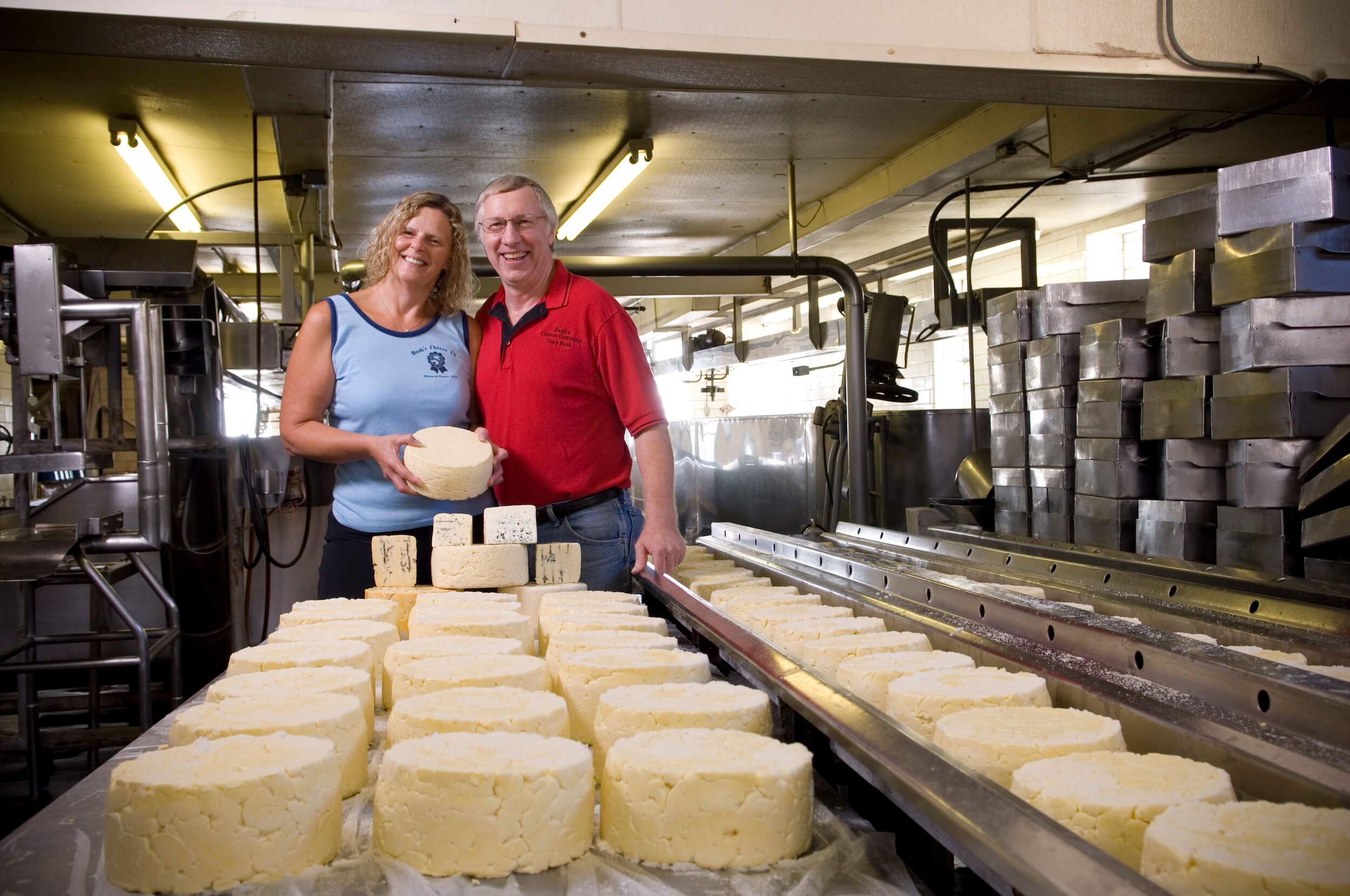How Hook's Cheese Champions Quality, Aging & Creativity
In tiny Mineral Point, Wisconsin, Hook’s Cheese Company, Inc. is having a moment. For only the third time in history, the company will release its 20-year-cheddar during May 2023. “We made about 1,000 pounds of this batch,” says co-owner, Tony Hook. “It’s already a little over half gone. We’re charging $209 per pound but stores will charge more. In 2015 our first batch was 450 pounds. Our second batch was 500 pounds, in 2020.”
This isn’t the first time Tony and Julie Hook have found the spotlight. Among many awards, Julie was named a top female maker of Colby cheese in 1982-an honor which she still retains. And Tony has crafted cheese for more than 50 years.
Origins of Hook’s Cheese
Tony Hook at Dane County Farmers Market photo credit Amy Sherman
“In 1970, I started working at [nearby] Barneveld Cheese Factory,” Hook says. “Then I apprenticed under the owner, Bill Schuelke, for two years. I got my license in 1972. Julie apprenticed under me and got her license around 1978.”
The couple launched Hook’s during 1976. A decade later, they moved to downtown Mineral Point. Producing dozens of cheeses, they also operate a (seasonal) booth at Madison’s renowned Dane County Farmers’ Market. Today, six full-time employees include Tony plus one sister, nephews, and a nephew’s wife. Julie helps with marketing for demos and shows, and she works at the Market booth on Saturdays.
“When we were out at Buck Grove (the original location) it was just the two of us,” Tony Hook says. “We bought the Mineral Point plant, and I picked up milk from farms until the late 1990s. Until 2001 we made about 1.5 million pounds of cheese annually, and we made the majority for big distributors.
“In 1994, we started selling at the Market, our name got recognized a little more, and we started picking up several dozen small distributors. So everything we have made since 2001 has had our label.
“From that point, we’ve grown to about 400,000 pounds per year, but our margins are a lot bigger. We now ship things out in much smaller amounts, too. We have less volume overall, but we make 70 varieties of cheeses and cheese curds. And a lot of high-end chefs put our name right on their menus.”
Making Cheddar
Dane County Farmers’ Market
All milk used in Hook’s cheeses is rBST free, and the company requires that all dairies they work with certify this. Hook’s initially crafted six- to seven-year cheese with local milk. By Dec. 2009, their 15-year cheddar was the oldest commercially available Cheddar. But Hook’s cheddar aging process differs significantly, from how the British typically make cheddar.
“Most of the British traditionally make bandage-wrapped cheeses that are air-cured,” Hook explains. “Over the course of a year, this cheese may lose about 25% of its moisture. We make our cheeses in 40-pound blocks. They’re aged in plastic and never exposed to air, so they don’t lose any moisture during that period of time-which makes it quite different from bandage-wrapped cheddar.”
Hook’s Blue Cheeses
Hook’s has also become well-known for its ‘blue’ cheeses, since the 1990s. “We have seven varieties of blue now,” says Hook. “In the last 20 years, it’s just been kind of fun to make a lot of different styles that we like. By 2001 we started making gorgonzola.”
With a soft, edible rind, Tilston Point Blue arrived three years later. Sheep's milk blue cheese-which is similar to Roquefort-arrived five years afterwards. There’s goat’s milk Barneveld Blue, and You Have to Be Kidding, which has a mixture of milks.
It’s the Milk…and More
Tony and Julie Hook
Hook recounts the relatively recent history of artisan cheese in America sharing that “In 1970 there were only a select variety of cheeses made in the U.S. But over the last 25 years a lot of U.S. [cheese] artisans have added a lot of new products that certainly compete well with many European cheeses.” As for his own success, he humbly gives credit to the excellent milk that he believes results in a better product.
In addition to working with cow’s milk dairies, Hook also sources sheep milk from Hidden Springs Creamery in Westby, WI and goat milk comes from LaClare Family Creamery in Malone, WI. But it’s not all the milk, it’s Hook’s combination of old-world tradition along with new-world artisan craftsmanship and innovative techniques, such as his unique curing and multiyear wet aging, that has made his cheeses renowned in the U.S. and beyond.





